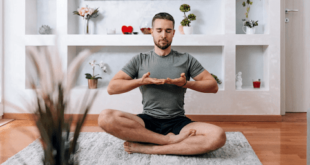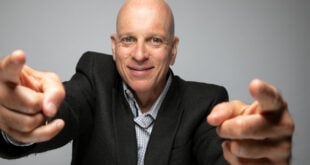A small red bump on scalp is usually an indication of an underlying problem which may or may not necessitate treatment. The signs may be red itchy bumps on scalp, not itchy reddish bumps, or large hard raised bump on the head.
What Causes Red Bumps on Scalp?
We see people complaining about bright red bump on scalp all the time in online forums and inquiring what cause them. Well, numerous factors are usually the underlying cause for scalp bumps including bacterial infection of the hair follicles, clogging of pores leading to build up of dead skin cells and bacteria, and fungal infection.
We have discussed specific skin conditions attributed to these factors in the next sections of this article.
Red Itchy Bumps on Scalp
The hair and scalp is exposed to numerous external factors ranging from harsh chemical to parasites, and dust. This coupled with improper hygiene can set stage for numerous skin conditions that manifest themselves as red itchy bump on scalp. These include:
Head lice (pediculosis capitis) infestation
These tiny, wingless parasites feed on blood and can infest your hair and wreak havoc on your scalp and cause extremely itchy red bumps. Although head lice are very small and hard to see, their eggs (called nits) are often easy to see stacked at the bottom of hair shafts. The nits are typically hard to come off the scalp.
One can get head lice through contact with an affected individual or through sharing of combs, towels and other items.
Getting Rid of Head Lice
Washing the hair and scalp with a shampoo (or other preparation) containing 1% permethrin is usually effective in eliminating the head lice that may be causing the itchy red bump on scalp. In addition you will also want to wash your bedding and clothes with hot water and soap to eliminate any lice and nits.
Folliculitis
Folliculitis can also cause red bumps in the scalp. This refers to the inflammation of the hair openings, called follicles, usually as a result of bacterial infection or irritation of the hair follicle e.g. though improper shaving (particularly in the area behind the scalp).
Black men are at an especially higher risk of developing “razor bumps” which are also known as pseudofolliculitis barbae.
When causes by bacteria, folliculitis may causes bumps that are occasionally filled with pus.
Treatment
- Your first course of action should be to use warm compresses. That is, pressing a small washcloth that has been dampened with warm water gently on the bumps. This promotes drainage of the bumps and faster healing. To avoid spreading the infection it is advisable to use a new washcloth for each compress.
- Avoid harsh chemicals: You will in particular want to stay away from hair styling products that contain alcohol to curb further irritation of the follicles. Mild soap and water should be enough until the condition has fully healed. It is also important to keep the scalp dry; use a clean towel to pat it dry after cleaning.
- Topical antibiotic creams e.g. Neosporin can also help to treat the infection and take out the inflammation. It is best to apply the cream or ointment after cleaning the scalp as explained in the previous point.
- An oatmeal product or hydrocortisone cream can as well be used to relieve itching.
- If all these measures don’t seem to yield results, it might be time to see your doctor. A dose of oral antibiotics may be required. The doctor may also prescribe some antihistamine drugs to curb itching. In some cases, a simple surgery to drain the bumps may be necessary.
Seborrheic dermatitis
Seborrheic dermatitis is one of the most common causes of itchy red bumps on the scalp. It tends to affect the entire scalp unlike folliculitis which affects small areas of scalp.
As the Medline Plus website says, the condition is caused by a combination of yeast (malassezia) and oil. Potential triggers include obesity, fatigue, stress, weather changes, autoimmune diseases, alcohol-containing hair care products, and infrequent washing.
Seborrheic dermatitis is perceived as dandruff by most people when the flaky skin starts to shed off. It can also affect the ears, nose and eyelids.
The condition can be triggered by factors such as stress, fatigue, obesity, poor hygiene i.e. infrequent washing of the head, autoimmune diseases, weather variations, and use of alcohol-containing products. The red bumps due to seborrheic dermatitis may sometimes spread to other areas of skin such as the ears, eyelids and nose.
Treatment
Non-prescription anti-fungal shampoo products containing ingredients such as tar, selenium sulfide, salicylic acid, resorcin etc are usually effective in treatment of seborrheic dermatitis.
Corticosteroid creams and ketoconazole shampoos may however be required for severe cases of seborheic dermatitis causing red bump on scalp. Your doctor may also give you some oral anti-fungal medications.
Red Bumps on Scalp Not Itchy

As for red, non-itchy bumps on scalp, scalp acne is most likely to blame more so if you have oily skin. Yes you read right, even the scalp can suffer from a breakout of acne as it is part of the skin.
The scalp has sebaceous glands which secretes an oily substance called sebum. Sebum helps to keep the scalp hydrated.
Despite this beneficial roles that sebum plays, it often mixes with dead skin cells and clog the skin pores. This creates an ideal environment for bacterial activity beneath the skin, eventually leading to formation of a microcomedone.
The microcomedone then continues to grow as to eventually become a whitehead or blackhead comedone. When it becomes inflamed, the comedone turns red and may sometimes be filled with pus.
Certain hair products may have ingredients with an effect similar to that of the combination of sebum and dead skin cells.
Treatment
Getting rid of any unnecessary hair styling products should be your first line of action. You should then look for a shampoo with salicylic acid as one of the ingredients. Tea tree oil is also believed to help treat scalp acne.
Another acne remedy that some people will swear it works – despite the lack of scientific evidence – is fenugreek leaves. Get some at your local health food store and prepare a paste by mixing the leaves with water. Apply the paste for 10 minutes, and then wash it off with warm water.
Painful Red Bumps on Scalp
What are painful red bumps on scalp? “I have painful red bumps on my scalp. What should I do to get rid of it?” Vivian. Well, you are very likely dealing with scalp folliculitis. As we have already mentioned, this happens when hair follicles get irritated (e.g. by shaving or exposure to harsh chemical in skin care products) or infected leading to an inflammation of skin cells.
Your treatment options range from warm compresses to topical antibiotic ointments (e.g. Bacitracin or Neosporin) and oatmeal products e.g. Aveeno and hydrocortisone creams (to get rid of itching). Otherwise, an oral round of antibiotics may be prescribed or surgical drainage of the bumps done at your doctor’s or dermatologist’s office.
Little, Tiny or Small Red Bumps on Scalp
Are little, tiny or small red bumps on scalp a sign of warts? What are they? “I have many tiny red bumps all over my scalp. I wash my hair and scalp very frequently so I know that i am not dealing with lice as I read in one forum. What could have caused these bumps?” Jameson
This is a question I came across as I went through the comments from our readers. Well, let’s start by pointing out that head lice is not necessarily an indication of poor personal hygiene. You can get lice through contact with infested items e.g. combs, brushes etc that have previously been used by a person with lice.
We thus cannot rule out lice infestation based on the criteria highlighted in Jameson’s question. If you spot red bumps coupled with small white eggs (nits) stacked at the bottom of hair strands – which are by the way usually hard to come off – your best bet is to look for a 1% permethrin cleanser at your local drugstore.
If you suspect seborrheic dermatitis (dandruff) go get anti-fungal shampoo containing ingredients like selenium sulfide, tar, salicylic acid etc at your local drugstore.
Large Hard Raised Red Bump on Scalp
If you have large raised red bumps on the scalp that are hard, your safest course of action is to talk to your doctor for appropriate diagnosis and treatment. You could for example be dealing with skin cancer especially if the area of scalp where the bumps are located shows minimal growth of hair.
Red Bumps on Scalp Treatment
What is the best treatment for red bump on scalp? As for those asking for our recommendations for the best scalp red bumps treatment measures, the most appropriate treatment option will vary depending on the actual skin condition underlying the symptoms.
Infections like folliculitis can be cured using antibiotic creams and warm compresses. Using medicated shampoos with ingredients such as salicylic acid and selenium sulfide will on the other hand help to treat seborrheic dermatitis (dandruff). As for infestations of lice, your best bet is to use a 1% permethrin cleanser.
In addition you will also want to follow a healthy diet that is rich in minerals, vitamins, and proteins. This will help to boost your immune system and make your body more effective in preventing future incidents of scalp bumps.
We have looked at specific treatments for specific conditions in more details in previous sections of this article.
 eTopical Precious Finds
eTopical Precious Finds




